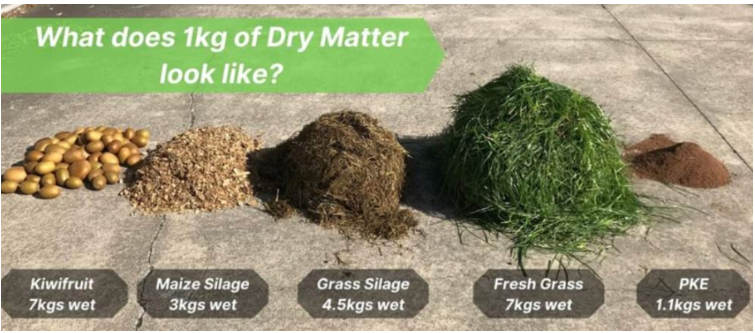Our role here at NZ Grazing is to take on dairy farmers young stock, place them on a grower farm, oversee and manage the heifer requirements along the way and ensure they grow like stink! Both the dairy farmer and the grower farmer put trust in us doing our job well to enable them to do well in this heifer development process.
Background
The rumen is the largest of the heifers four stomachs and needs to be managed carefully to get maximum functionality. As we tick along through the year we move closer to the time when we take on those rising yearling heifers still on the dairy farm. Now is the time in these months leading up to these heifers trucking off to the grower farms to ensure you are doing the best for their rumen development. In these challenging summer months many farmers incorporate palm kernel expeller (PKE) into the normally largely pasture based diet. Like it or not PKE can be a useful dietary supplement. There are situations when PKE is detrimental and has a longer-term negative effect than you may realise.
Heifers in NZ predominantly are fed pasture and pasture is often the sole diet. What do you notice about the below picture comparing fresh grass with PKE?

A very large volume difference, 1 kg DM of grass is very bulky, 1 kg DM of PKE is not.
The Problem
Right now a weaner dairy heifer should be eating upwards of 4.5kg DM/d ie 4.5 times (at least) the grass or PKE piles in the photo. If PKE makes up the dominant portion of a heifers diet the rumen will shrink in size reducing the heifers capacity to eat grass if the diet changes back to predominantly grass quite quickly.
We see this happen.
Our Learning
An example of this is looking at the growth performance of the same owner line, two consecutive years heifers for a May-to-May year term. The heifers that arrived on our experienced grower farm in late April of 2022 lost weight in their first month of grazing and even in their second month gained only small gains. These heifers in the first 2 months on grower farm had fallen 20 kg behind their weight for age from arrival and with animals falling into breach. We now understand that this line of heifers had been fed ad lib PKE (always available approx. 3-4kg/hd/d consumed) since December all the way through to trucking to our grower farm in late April. Needless to say the grower was pulling his hair out with the very poor performance compared to other lines just arrived. Heifers like this previously on high levels of PKE often look fantastic and are well above weight for age but crash once relocated and back on a pasture-based diet. Their rumen has so little capacity to eat the volume of grass they need to maintain themselves let alone gain weight.
The next intake of these heifers in late April 2023 was a completely different story. Prior to relocating to our grower, they had been fed only minimal amounts of PKE (1kg/hd/d) to supplement their pasture-based diet. Once arriving at our grower farm these heifers gained 0.9kg/d in their first month and continued to perform above targets. No hair pulling for the grower or the NZG manager!
The Solution
Bringing a heifers rumen capacity back up to size for a pasture-based diet takes weeks, if not months and can result in failing weight gain and targets not achieved, as this example demonstrates.
So now is the time to make sure you are feeding your heifers to maximize their rumen function for not only now but also in the months to come when they relocate to the predominantly pasture based grower farms.
What pasture also does for a rumen is to provide fibre. A rumen must have at least 10% fibre for healthy rumen function. In the last wet year that most of us have experienced we have seen many lines struggling and in most cases have looked to be on fantastic feed. On these lush wet pastures fibre is often the limiting factor. Do not underestimate the importance of fibre in a ruminant animal’s diet. Even a small offering of hay, straw or silage may make a dramatic difference in gut through-put speed of lush pasture resulting in better growth rates – getting the most bang for (grass) buck!
The addition of fibre two weeks PRE and POST trucking can prevent disease and relocation stress. The addition of fibre results in heifers coming off a truck and getting back to grazing and growing immediately. Vitamin B1 deficiency (also called thiamine deficiency) can be triggered from a sudden change in diet often seen in the relocation of animals from one farm to another. Again, we see this happen and unfortunately there are deaths as a result of B1 deficiency soon after relocation that could have been avoided.
Whether you are a sending or receiving farmer of animals trucking you have a part to play in minimising the stress and impact of relocating heifers and looking after that rumen function.
Bridget Clark
Operations Manager
NZ Grazing Company
